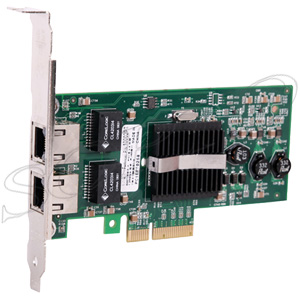-

- Sopto Home
-

- Special Topic
-

- PCI-E Card Knowledge
-

- PCIe Hot Swap Device Driver Part 2
PCI-E Card Knowledge
- Info about Network Interface Card Teaming
- How to Setup a Server with Multiple Network Interface Adapters?
- How to Reconnect an Internet Network Adapter for an Acer Aspire?
- 9 Things to Do When Your Internal Network Card Stops Working
- Ethernet Standards NIC for Home Networking
- What Is a Network Interface Adapter?
- How to Configure a Network Interface Card in Linux?
- How should Configure Your NIC for ISA and TMG?
- Recommended Network Card Configuration for Forefront UAG Servers
SOPTO Special Topic
Certificate



Guarantee
Except products belongs to Bargain Shop section, all products are warranted by SOPTO only to purchasers for resale or for use in business or original equipment manufacturer, against defects in workmanship or materials under normal use (consumables, normal tear and wear excluded) for one year after date of purchase from SOPTO, unless otherwise stated...
Return Policies
Defective products will be accepted for exchange, at our discretion, within 14 days from receipt. Buyer might be requested to return the defective products to SOPTO for verification or authorized service location, as SOPTO designated, shipping costs prepaid. .....
Applications

PCI-E NIC Cards provide redundant connectivity to ensure an uninterrupted network connection.
PCI-E NIC Cards are ideal for VM environments with multiple operating systems, requiring shared or dedicated NICs.
They are specially designed for desktop PC clients, servers, and workstations with few PCI Express slots available.
SOPTO Products
- Fiber Optic Transceiver Module
- High Speed Cable
- Fiber Optical Cable
- Fiber Optical Patch Cords
- Splitter CWDM DWDM
- PON Solution
- FTTH Box ODF Closure
- PCI-E Network Card
- Network Cables
- Fiber Optical Adapter
- Fiber Optical Attenuator
- Fiber Media Converter
- PDH Multiplexers
- Protocol Converter
- Digital Video Multiplexer
- Fiber Optical Tools
- Compatible
Related Products
Performance Feature
PCI-E Card Knowledge
Recommended


PCIe Hot Swap Device Driver Part 2
System Interconnect Consideration
The IDT System Interconnect Topology shown in Figure 1 consists of a single x86 based Root Complex Processor (RP) connected to one or more intelligent x86 based Endpoint Processors (EP) via an IDT System Interconnect PCIe switch. An IDT Inter-Domain switch is utilized by each EP to connect them to the downstream ports of the System Interconnect PCIe switch. This topology in conjunction with the IDT System Interconnect Software allows high speed data transfer between any two peers in the system.

Figure 1 IDT System Interconnect Topology
When a new EP is connected to or disconnected from a system utilizing this type of topology, the Hot-Swap driver treats the EP the same as any normal endpoint device. There is, however, a difference in the way in which an RP is treated when it is connected to or disconnected from the system.

Gigabit ET Dual Port Server Adapter
Typically, when the upstream port of a PCIe switch is disconnected as shown in Figure 2, the switch will issue a hot reset to all of its downstream ports. This functionality is undesirable in the System Interconnect topology since it would prevent the EPs from communicating with each other when the RP is disconnected from the system. The Hot Swap driver overcomes this issue by detecting IDT PCIe System Interconnect Switches and disabling their ability to generate a hot reset when their upstream ports are disconnected. This functionality may be disabled in the Hot Swap driver by setting the “link Down Hot Reset” module parameter to a non zero value.

Figure 2 System Interconnect Root Complex Pr ocessor Removal
The Hot Swap driver also sports a passive resource allocation algorithm. Used primarily with the IDT System Interconnect Topology, this algorithm allows an RP to be connected to an operational system with minimal system interruption. Typically, when an endpoint device is connected to the Root Complex, it is the Root Complex that assigns memory resources to the device. In the case of passive resource allocation, it is the Root Complex that assigns memory resources to the device. In the case of passive resource allocation, its’ Root Complex, whose memory resources, should be used. This functionality is enabled by default in the Hot Swap driver, but it may be disabled by setting the "passive Allocation Disable” module parameter.
For more info about PCI Express and optical fiber communication, please browse our website or contact a Sopto representative by calling 86-755-36946668, or by sending an email to info@sopto.com.




